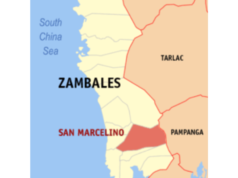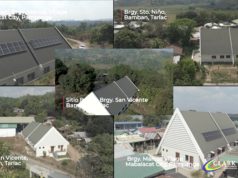They sought, found and received assistance on the use of new technologies in rice growing on their mountainous area. They are also into a “palayamanan system”, a scheme that makes small piece of land produce varied agricultural products.
These tribesmen are relocatees from their former enclave when Mount Pinatubo, near the tripoint of Zambales, Tarlac and Pampanga, erupted in 1991.
Their relocation site was different, nay, harsher, compared to their erstwhile established community at the foot of the volcano. For one, it was a barren place as the area was denuded and the forest cover regrowth does not off er their usual source of livelihood.
One of their proud elders, who, instead of relying on the intermittent assistance given by the government and some non-government organizations, however, started blazing the trail for the others.
The Aeta-Belbel, who resettled in Lupang Pangako, numbered 187 families. Through the help of a non-government organization, they managed to get exclusive rights from the local government unit of Iba town to establish their new community on a 235 mountainous area.
They named it “Lupang Pangako” to convey a collective aspiration that their new community will provide them better state in life than before.
PhilRice
In a documentation made by the Philippine Rice Research Institute (PhilRice), the Aeta-Belbel elder, Artemio Castillo, or Mang Arting, 53, “demonstrated a painstaking path toward self-empowerment to attain progress in life”.
He laboriously cleared a three-hectare area and planted it with palay and vegetable crops. His initial eff orts, though, resulted in a dismally low yield as water to irrigate his standing crops was always in short supply. He barely made an income of P1,000 for his toils.
Undaunted, Mang Arting looked for a source where he could draw water. He found a rainwater way and built a big dike on it to impound water.
“I fetched water by can from the impounding area to irrigate my standing crops,” Mang Arting said in Tagalog.
Through the assistance of the NGO which has been guiding the community, he made organic fertilizers out of the dried leaves, grasses, rice straws, and decaying twigs. He applied the fertilizer to nourish his crops.
Heeding the suggestion of the offi cials of the NGO, who gave him the needed seeds, he also planted water melon. His income increased but it was not enough to sustain the needs of his family.
It was then that he decided to heed the invitation by PhilRice to join a “Lakbay-Palay” tour and orientation-discussion. He towed along 27 other male members of his community in his visit to the agency’s compound in the Science City of Muñoz.
His heart leapt with joy as he and his companions were given orientation on the use of modern technologies in rice production. They were also led to a visit and observation of the “Palayamanan System.”
Palayamanan
“Maganda po ‘yong Palayamanan System. Nagpapakita ito ng sabay-sabay na pagtatanim ng palay, gulay, punongkahoy na namumunga at pag-aalaga ng tilapia at maliliit na hayop na mapakikinabangan. Kayang-kaya po naming isagawa iyon (The Palayamanan System is good. It tells us how to use a small piece of land for the simultaneous growing of rice, diff erent kinds of vegetables, fruit trees, growing of tilapia, fruit trees and the culture of tilapia and other small animals. We can easily adopt this system),” Mang Arting said.
Then with the help of PhilRice and the Philippine National Red Cross (PNRC), Mang Arting was given a mechanical water pump that can draw water from a river down below their production area.
“With the use of modern rice seeds and the technologies taught us, plus the ready supply of irrigation water, we were able to engage in a wider scale of rice growing. We also copied the Palayamanan System,” Mang Arting said.
Ash Canilang, a PhilRice science research specialist, said in his report that Mang Arting cleared another seven hectares for his farmland. On it, he planted onions, watermelon, bitter gourd, in addition to palay.
“He used to harvest an average of 50 to 60 cavans of rice every cropping season. Now, his average yield is 125 cavans,” Canilang said. “From his other crops, he made a net of P160,000 last year,” he added.
Canilang said that with the help of PhilRice’s Small Scale Irrigation System, Mang Arting is now venturing on hybrid rice seed planting. Hybrid rice seed is touted to increase yield by 30 to 40 percent.
The other Aeta tribesmen in the village is following the example shown by Mang Arting. They have also cleared several areas and have begun raising diff erent crops. “They are using the water pump on rotation basis.
They are planning to acquire several pumps in order to meet the demands for more irrigation water for their crops,” Canilang said.
Then he quoted Mang Arting as saying: “Sipag, tiyaga lang at pag-eeksperimento ang kailangan para magtagumpay. Ngayon, tiyak na at lubos ang aming pag-asa sa magandang buhay sa Lupang Pangako (It is diligence, hard work and experimentations are needed in order to succeed. Now, we are certain that we can have a better life in Lupang Pangako.)”




